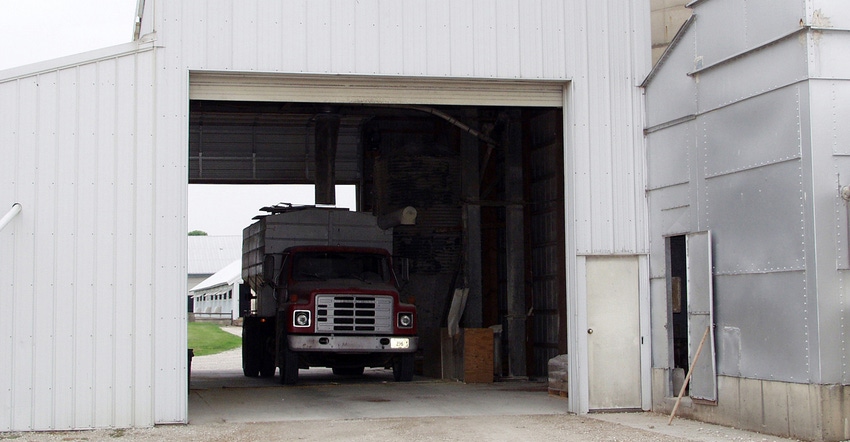Identify feed mill biosecurity risks and implement safety measures
Self-audits or third parties can be utilized to help revisit your plan and make improvements.
February 27, 2020

Feed mills serve as a central location for feed ingredients to create a complete ration. Ingredients and complete feed have the potential to carry and harbor detrimental bacteria and viruses (Dee et al., 2018 and Cochrane et al., 2018).
These ingredients and complete feed not only have the potential to introduce pathogens themselves but also create a central hub for pathogens to enter a system via various types of traffic, including transportation trucks and foot traffic.
It is important to understand and identify each potential risk, implement procedures to reduce the risk, train each employee on the risk and associated procedures, and revisit your biosecurity plan.
Understand the risks that incoming ingredients and outgoing feed can carry. Do not hesitate to ask your suppliers about their biosecurity procedures today including their protocols for the importation of feed ingredients from other countries.
Many suppliers have moved to more secure biosecurity procedures around the importation of vitamins and amino acids because of recent work completed by Dee et al. (2018) using a transboundary model showing that some viruses such as African swine fever require a quarantine time in order to reduce the viral load in feed and ingredients.
A responsible importer or reseller of vitamin and amino acids would
Facility decontamination in the country of concern.
Empty transport vessels disinfected using a one-way driveway for dirty vehicles and containers.
Once disinfected, transport vessels are loaded and sealed at the manufacturing plant prior to transport and export.
Once loaded and sealed, a disinfected truck is used to haul to the port for export through a "clean" driveway.
Once loaded at the port the estimated time on water is approximately 30 days. Once the product arrives at the U.S. port, unloading occurs on transport vehicles, rail or trucks.
Days from production and shipment of Chinese vitamins and amino acids range from 40 days to 100 days depending on what occurs after it hits the U.S. port.
Responsible importers make sure that there are another 30 days or more before product is shipped to end-users and can include:
Quarantine times in a heated warehouse.
Disinfection of pallets.
Hazard Analysis Risk-Based Preventive Control Plans
Continue to meet the requirements of the Food Safety Modernization Act and registered with the Food and Drug Administration as required by the Bioterrorism Act.
Provide verification of holding and storage times for imported products to the end-user.
Identify your biggest biosecurity concerns and risk areas within each ingredient, process and transportation. This should also include the use of the scale at the feed mill as it is a step that is frequently overlooked. When creating biosecurity plans, most of the focus is placed on the receiving and load-out areas as they are the two major areas in which pathogens can enter a feed mill through ingredients, vehicles or foot traffic.
Feed ordering is also another major area to consider when identifying potential risk. If same-day orders occur, it becomes difficult for a mill to maintain a biosecurity pyramid for deliveries. Reducing the occurrence of same-day orders can help to ensure feed trucks are sequenced and disinfected properly. It is also vital to include the mill manager and other employees who are involved in the everyday responsibilities at the feed mill to help identify any potential risk and or overlooked processes.
Implement procedures to reduce the risk within the mill. Different strategies exist today and include prevention, thermal treatment and residual mitigation. One key factor is to implement procedures based on science and not based on emotion.
Train employees on each risk that is identified for ingredients, processes and transportation. Employees should be trained to ensure they are familiar with and understand the established procedures. Don't be afraid to use different training techniques that involve hands-on training for drivers and visual diagrams.
Most people learn using different styles which makes it important to know your employees and how they will best learn the risk and procedures. It is also important to look back at your biosecurity program to make sure all procedures are being completed and understood by each employee. This could include a surprise walk through of the mill to make sure no short cuts are in place. Make sure employees understand the economic impact if breaks were to occur at the farm. This makes it more realistic to the employee and helps to show them the overall importance.
Re-visit the biosecurity plan to include the introduction of any new feed ingredient to the mill. Self-audits or third parties can be utilized to help revisit your plan and make improvements. It is also important to re-visit any audits to make sure they are up to date with new information and risk associated with feed and ingredients.
For further information about feed mill and ingredient biosecurity, feel free to contact Roger Cochrane, 507-215-5879, or Amber Pugh, 319-352-4162.
References
Dee, S.A., F.V. Bauermann, M.C. Niederwerder, A. Singrey, T. Clement, M. de Lima, C. Long, G. Patterson, M.A. Sheahan, A.M.M. Stoian, V. Petrovan, C.K. Jones, J. De Jong, J. Ji, G.D. Spronk, L. Minion, J. Christopher-Hennings, J.J. Zimmerman, R.R.R Rowland, E. Nelson, P. Sundberg, and D.G. Diel. Survival of viral pathogens in animal feed ingredients under transboundary shipping models. PLoS ONE 13(3): e0194509.
Cochrane, R.A. 2018. Interventional strategies to reduce biological hazards in animal feed. PhD Diss. Kansas State Univ., Manhattan.
Sources: Roger Cochrane, Amber Pugh, Jon De Jong, Scott Dee and Casey Neill, who are solely responsible for the information provided, and wholly own the information. Informa Business Media and all its subsidiaries are not responsible for any of the content contained in this information asset.
You May Also Like



